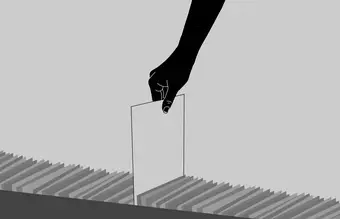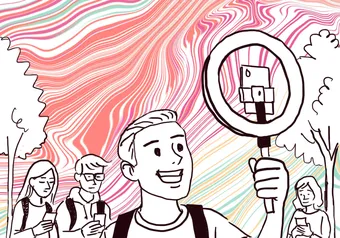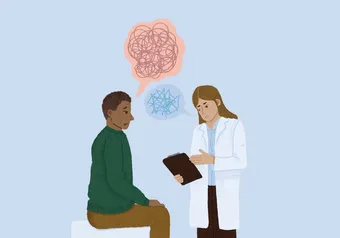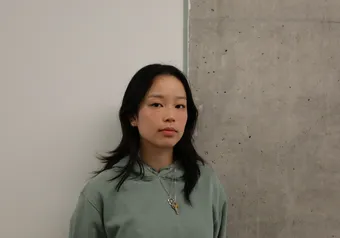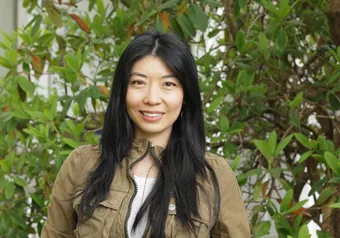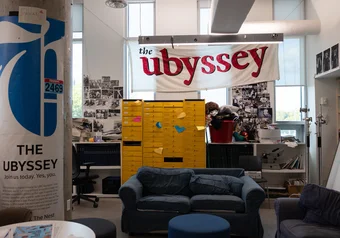This article contains mentions of sexual assault.
“Y-O-U-N-G at UBC, we like ‘em young. Y is for ‘your sister.’ O is for ‘oh, so tight.' U is for ‘underage.’ N is for ‘no consent.’ G is for ‘go to jail.’”
In 2013, students yelled this chant on a bus ride during frosh week. The sound of the words travelled through the bus and made its way into major news outlets across the country.
The ‘Sauder rape chant’ became a symbol of sexual misconduct and rape culture in the Sauder School of Business and Commerce Undergraduate Society (CUS) — eventually leading to CUS executives stepping down, CUS leaders undergoing sexual violence prevention training and the cancellation of Sauder frosh events.
Rape culture at Sauder didn’t just disappear after 2013. In 2017, an anonymous student posted in the UBC subreddit about their experience with “sexual violence by CUS members,” according to the CUS’s Historial Document on sexual violence. In 2020, anonymous students submitted their experiences regarding sexual violence within the CUS to the UBC Confessions Facebook page.
This led to the creation of Article 13, the CUS’s Sexual Misconduct Mitigation Policy — a constituency-specific policy that builds upon the AMS’s Sexualized Violence Policy (PC2).
Developed in 2019, the AMS’s PC2 — Sexualized Violence Policy, formerly known as I-17, outlines how the student society responds to disclosure of sexual misconduct.
PC2 defines ‘consent’ as “the informed, enthusiastic, conscious, ongoing, and voluntary agreement to an act or acts and to continue to engage in the act or acts, which is communicated through words or conduct.”
Though PC2 applies to all AMS clubs, members, non-student staff and subsidiaries — including undergraduate societies — some undergraduate societies have established their own sexual assault policies, in addition to the AMS’s PC2 and UBC’s SC17. SC17 is UBC’s sexual assault policy.
The policies aim to fill the gaps that the AMS-wide policy leaves, reflecting the importance placed on sexual assault prevention on campus — the 2022 AMS Academic Experience Survey reported that one in five UBC students has experienced sexual assault or misconduct during their time at UBC.
From the CUS to the EUS, constituencies have found unique ways to develop consent cultures within their own communities and ensure that their constituents are safe on campus.
What did the CUS do?
The start of the CUS’s recent efforts to address sexual misconduct started like many conversations these days do — with a Facebook post.
In February 2020, an anonymous student submitted a post to the UBC Confessions Facebook page alleging they knew someone who reported a sexual assault to the CUS, but the undergraduate society didn’t do anything about it.
Over the next month, more anonymous posts expressed similar experiences on the Facebook page.
According to fifth-year entrepreneurship and organizational behaviour student and CUS Equity Advisor Ky Sargeant, “an incident regarding sexual misconduct [that] implicated some members of the CUS” led the CUS to create their own sexual misconduct policy.
“The CUS realized that they didn't have a policy in place and they didn't have a structure in place to know how to react to that situation,” said Sargeant.
The CUS’s Sexual Misconduct Mitigation Policy (SMMP) was created within CUS Code in the 2020/21 academic year, according to Sargeant.
CUS Code defines consent culture as “a culture where everyone respects the physical and emotional boundaries of those they interact with personally and professionally. This includes, but is not limited to sexual acts, physical contact, treatment in professional settings, and use of language.”
SMMP does not specify termination as a consequence of sexual misconduct, but Sargeant said it is mentioned in an internal document.
“If you are not upholding the expected behaviour and professionalism and just like pure being an asshole, you’re going to get fired. It says it in much more formal language than that, but that’s the effect,” said Sargeant.
Fifth-year bachelor of fine arts and master of management student Anneke Dresselhuis saw the series of sexual misconduct allegations on the UBC Confessions Facebook page in 2020 and thought something needed to be done about consent culture in the CUS.
This led her to become the director of CUS Clarify, the undergraduate society’s sexual violence prevention office, with the support of other Sauder students. Before Clarify, the CUS had a sexual violence prevention student coordinator and service, but Dresselhuis and Evelyn Ashworth (the other Clarify director) thought a dedicated sexual violence prevention group in the CUS was needed.
“Sexual violence is something [that has] unfortunately been a part of my own experience at UBC,” said Dresselhuis. “I ultimately got involved in Clarify in the Commerce Undergraduate Society because I was really feeling exhausted hearing about the sexualized and gender-based violence that was disproportionately being experienced by Queer folks and women around me, specifically in the Sauder School of Business.”
The creation of the SMMP was split between the CUS president, CUS’s equity portfolio and Clarify. Kristian Oppenheim, a recent Sauder grad and former CUS president, said UBC Sexual Violence Prevention Resource Office (SVPRO) were “really great mentors and advisors” in the development of the SMMP.
The SMMP says CUS event planners must undergo at least one sexual violence prevention training workshop — facilitated by either the SVPRO, AMS Sexual Assault Support Centre (SASC), UBC Investigations Office or another party approved by the CUS executive.
According to Sargeant, CUS executives have to complete a mandatory SVPRO Canvas module but are not subject to completing other sexual violence prevention training if they are not involved in event planning. She said there had not been reported incidents of sexual misconduct since the creation of the policy but confirmed there is no formal disclosure process when reporting sexual misconduct to the CUS.
“I think that’s definitely something that we still need to work on in terms of building up a robust policy for disclosure,” said Sargeant. “The wider Sauder [community] is also working on a lot of these reporting processes and grievance processes. I happen to work with the Dean’s Office and so I know that the Dean’s Office right now is creating a really robust reporting strategy, so that students can report there.”
When asked if AMS’s Sexualized Violence Policy PC2 — a policy that extends to all undergraduate societies — is enough on campus, Sargeant said it is if students read the policy.
“If anyone read the AMS policy within Sauder or within any faculty in the school, then it would be more than enough,” said Sargeant. “But people don’t.”
“The fact that we have our policy and the AMS has their policy, the chances of someone reading one of those two is higher.”
No standalone sexual misconduct policy in the AUS
The Arts Undergraduate Society (AUS) represents 13,000 students and is run by fourth-year honours political science student Fatima Rua.
While the AUS doesn’t have a stand-alone sexual misconduct policy, it has a “zero tolerance for sexual violence … bullying and harassment,” according to Rua.
Hired AUS members, like directors and coordinators, must complete a Canvas module about the AUS called “AUS 101: Getting Started with the AUS,” which includes sexual violence harassment prevention training. These modules were created during the 2020/21 academic year.
AUS executives have access to an “HR strategy” created by Rua in the 2021/22 academic year and are expected to follow AUS code. AUS code outlines that volunteers, including executives, can be terminated for “harassment of any kind.”
The AUS also holds sexual violence prevention training within its bi-annual orientation. According to Rua, the AUS invites either SVPRO or SASC to facilitate a workshop about sexual harassment and consent. This orientation is mandatory for all executives.
Regardless of if an undergraduate society has a sexual misconduct policy, students must follow PC2.
When asked if PC2 is all-encompassing, Rua said the policy has been “foundational” for the undergraduate society. “I think [the] AMS policy does a good job at at defining what sexual violence is,” said Rua. “I think that it is important that the AUS follows that, but also develops its own policies for accountability.”
Rua hopes to work with the AUS human resources and equity, diversity and inclusion departments to develop an AUS harassment or sexual misconduct policy or clauses within the AUS code. Rua said the AUS will consult groups like the SVPRO and SASC when writing sexual misconduct policies.
Regarding consent culture on campus, Rua said more work needs to be done.
“I think it starts with constituencies, as well because we can start working on our faculties, making sure everybody kind of understands consent culture and the importance of knowing the signs of sexual violence and harassment,” said Rua. “We can make [consent culture] stronger and more developed across UBC.”
SUS’s harassment policy
The Science Undergraduate Society (SUS) has had an internal harassment policy since November 2020, according to fifth-year integrated sciences student and former SUS VP external Keanna Yu.
According to Yu, the policy was created by the SUS human resources team after she promised to create better disclosure training as part of her platform. The policy went through SUS Council before being finalized, said Yu in an interview with The Ubyssey in May.
“Consent culture is just going to directly affect how people view us, how people engage with us, especially our volunteers,” said Yu. “And so without that standardized policy there, I think that we were just worried that people wouldn’t really know how to handle conflict.”
Dayle Balmes, fifth-year integrated sciences student and former SUS president, said in an interview with The Ubyssey in May that the SUS Harassment Policy is an internal policy that extends to executives and volunteers. SUS did not require executives or volunteers to undergo sexual violence prevention training.
According to fifth-year honours integrated sciences student and current SUS President Harjot Uppal, SUS executives and volunteers tasked with organizing events receive training from SVPRO.
Balmes said the SUS Harassment Policy has not yet been used for an incident of sexual misconduct.
The policy defines harassment as “any physical or verbal behaviour that is unwelcome and/or has a negative impact towards an individual/group.” Harassment under the policy extends to sexual harassment.
The policy also outlines how the undergraduate society responds to disclosures.
After a disclosure is made, a warning will be issued for a respondent’s first occurrence of harassment, and a SUS human resources team member will meet with the respondent to speak about the “expectations and values involved with being a SUS Staff,” according to the SUS Harassment Policy. Respondents will also create a “plan of action” with the SUS human resources team to “rectify the situation, in the spirit of promoting growth and change.”
If another disclosure occurs for the same respondent, regardless of the type of harassment, “a serious conversation” with the respondent will take place. Respondents who don’t change their behaviour can be terminated.
While other undergraduate societies consulted external bodies like the SVPRO and SASC while creating their sexual misconduct or harassment policies, SUS did not since its policy was not “specifically focussed on sexual harassment,” according to Yu.
“It’s a really good idea. I wish we thought of it,” said Yu. “[The policy] was inspired by how businesses onboard their employees so we mostly refer to the onboarding documents that a lot of us had seen through our own experiences.”
EUS is codifying informal practices
According to fourth-year geological engineering student and EUS President, Christian ‘CK’ Kyle, addressing harassment has been in the EUS’s policy manual since the 1960s.
But a harassment policy that codifies informal practices wasn’t created until concerned student Jessica Yamamoto, a recent chemical and biological engineering graduate, asked EUS Council if she could help rewrite the current harassment clause in EUS code.
Kyle said there are informal practices regarding sexual misconduct disclosure that are not currently written into policy but that the policy rewrite, led by Yamamoto, who is consulting the SVPRO, SASC and CUS, will change that.
“This policy is part of the EUS better codifying its practices while improving transparency so students feel comfortable approaching us,” said Yamamoto in an interview with The Ubyssey in May.
The EUS’s harassment policy is a clause in the society’s policy manual and applies to executives, volunteers and engineering students not employed by the EUS.
The policy outlines that EUS executives and volunteers must “immediately report the [harassment] incident to the President and the AMS Ombudsperson.” This is a clause that Kyle wants the policy rewrite to address.
“I think one of the biggest issues with the standing policy is the immediate reporting that has to happen,” said Kyle. Kyle said he would like to see a policy that gives survivors the choice of if they want to pursue a complaint with the undergraduate society.
Any misconduct perpetrated by an EUS executive or volunteer leads to a vote for the termination in EUS Council. According to Kyle, misconduct can include failure to report harassment to the EUS president and AMS ombudsperson, “especially and explicitly if the person who reported it to them wanted something to be done within the EUS.”
Kyle said EUS executives are mandated to receive professional development training, which in the past has included an SVPRO workshop. However, executives are not required to undergo training outside of professional development.
Other volunteers do not have to participate in sexual violence prevention training as well, but the members of the student life committee are required to attend SVPRO workshops since they organize the EUS’s parties.
Engineering parties are run by the EUS and take place in the Engineering Students Centre. For parties, the EUS obtains special event permits from the RCMP and approval from the faculty as well as hires security, harm reduction and first-aid groups. Kyle also said half of the executive team must be sober during a party.
“During COVID[-19], we saw a lot of institutional knowledge fizzle out,” said Kyle. “I think that helped me realize that [policy] is something that we can’t afford to lose.”
What does the AMS think?
The AMS is currently reviewing PC2, and the revised policy will be approved in the next few months, according to AMS VP Academic and University Affairs Dana Turdy. She said the policy review will have plain language summaries to reduce jargon in the policy to make it more accessible to students.
“I think that is really on us to be better with outreach and education regarding the policies,” said Turdy. “One of the main pieces of feedback that we received were that people don’t know that this exists.”
Students can disclose sexual misconduct to an AMS executive regardless of if they decide to submit an official report. If a student reports sexual misconduct to the AMS, an investigation can take place. Based on the findings of an investigation, respondents can face termination. Students can also report sexual misconduct to UBC.
Turdy said the AMS reached out to the UBC ombudsperson, SVPRO, SASC and others while creating this policy.
When it comes to sexual violence prevention training for AMS executives, Turdy said training differs by the year, and it is up to the executives and the student society’s “relationships with the SASC to make sure that this training happens.”
PC2 says “The AMS is responsible for maintaining a safe environment where its members and staff can pursue educational, social, and personal matters without concerns of Sexual Violence.” Policy also states the AMS has a “zero-tolerance” for sexual misconduct.
Turdy said she believes sexual violence and harm on campus occur in the contexts of gender-based violence and violence against the 2SLGBTQ+ and Indigenous communities. She also said “institutions like fraternities and sororities also have a role to play in [consent culture] and I think that has to be addressed.”
Student groups like undergraduate societies aren’t mandated to have sexual violence prevention policies, but the university is. But, Turdy doesn’t think it’s a bad thing to have more policies in place.
“Students are always subject to SC17 as well and UBCs own policies and procedures,” said Turdy. “I think clubs and constituencies are their own kind of communities and spaces where a lot of students are engaging with each other, and I think due to the nature of some of the events that are held, like social events where people may be drinking, using substances, etcetera, that it's really important that they have as many resources as possible to really address sexual violence and to prevent it.”
Turdy said constituencies creating their own policies is “great” since the AMS relies on student leaders to further consent culture on campus.
“I think, really, what we can do is offer our knowledge … and our services as well, that can help support them in that work,” said Turdy.
— With files from Charlotte Alden
Evelyn Ashworth contributed to The Ubyssey in 2020. She was not involved in the writing or editing of this piece.
First online
Share this article


